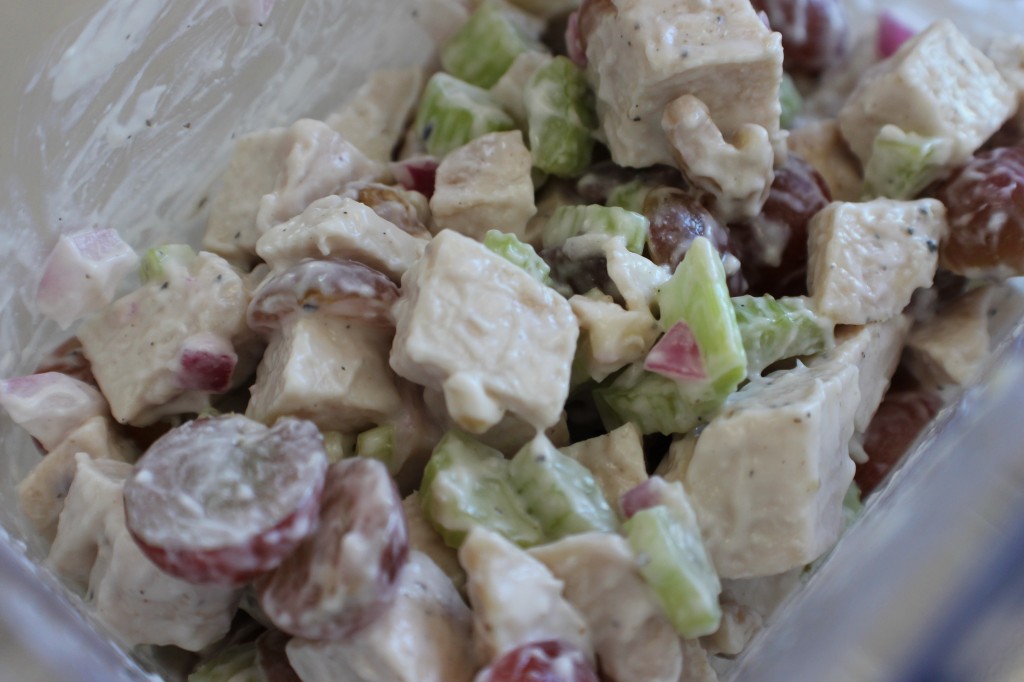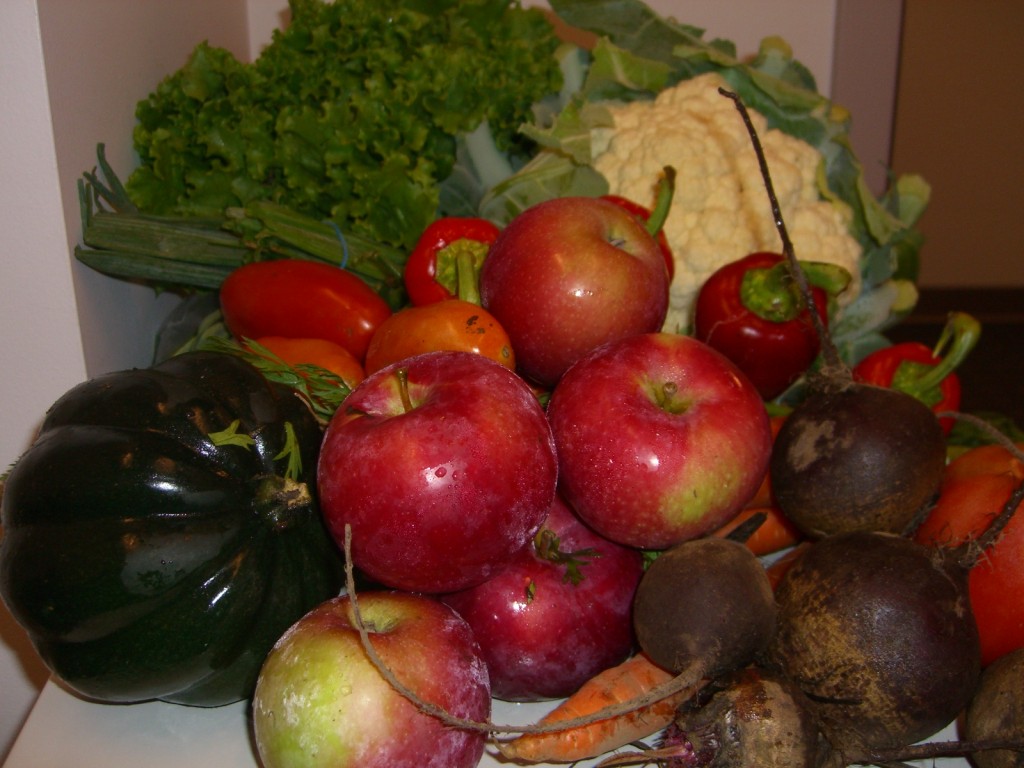
It’s officially fall! Although the weather has been strangely warm (I can’t say I’m complaining too much), the massive piles of Halloween candy at the grocery store is a sure reminder that orange and yellow are making their yearly come-back. A much healthier indication of fall is the produce selection in the recent CSA boxes.
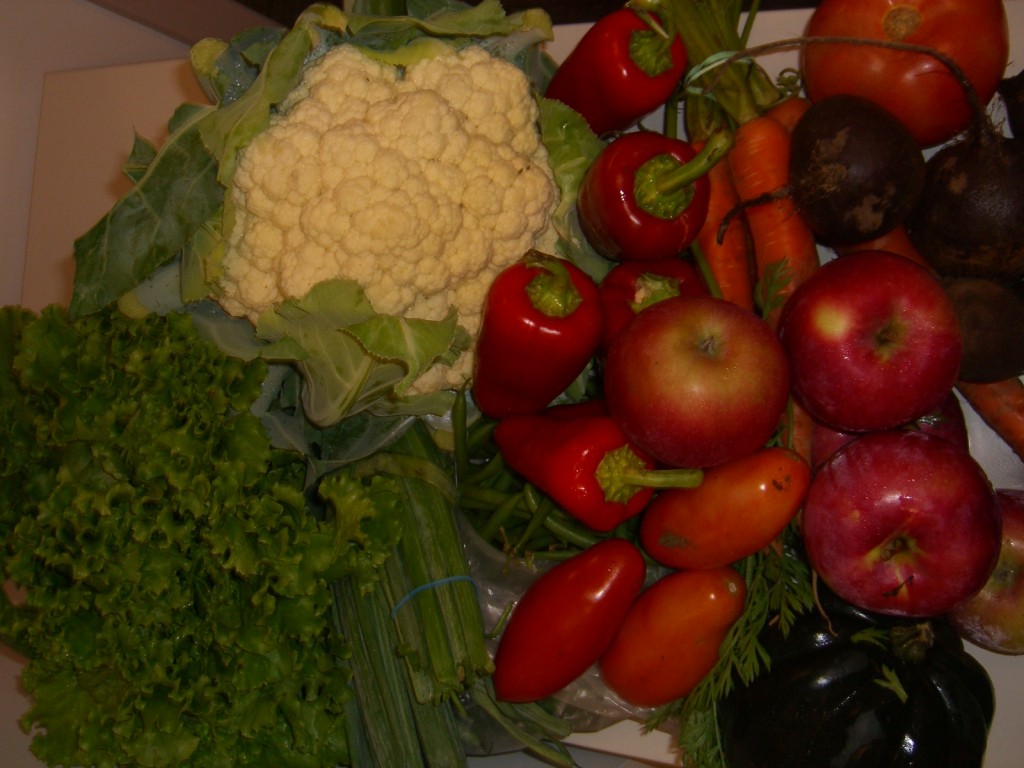
This week’s CSA included: 1 head of Cauliflower, 1 Acorn Squash, 1 lb Green Beans, 5 Mariachi Peppers, 12 San Marzano Tomatoes, 1 head Lettuce, 1.5 lbs cut Beets, 1 bunch Carrots, 6 Macintosh Apples (apples from Carver Hill Orchards)
Rich in antioxidants, acorn squash is a nutritious addition to a fall-flavored meal (and it follows the orange and yellow theme making it great for October dinner parties).
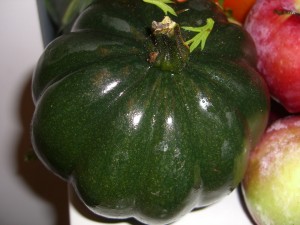 Acorn squash has a very interesting shape that makes it nice to look at sitting on the counter. But how on earth do you prepare it? As with any winter squash, you have a couple of options.
Acorn squash has a very interesting shape that makes it nice to look at sitting on the counter. But how on earth do you prepare it? As with any winter squash, you have a couple of options.
1. Cut the squash into cubes (as best as you can, they don’t have to be perfectly shaped) and remove the fibers and seeds – but don’t throw those seeds away! Steam the cubes for about 7 minutes.
2. Cut squash in half from the stem end down (rather than across the diameter). Remove the fibers and seeds. Cover and place both halves in the microwave. Microwave on high for about 2 minutes.
3. To cook whole, pierce the skin a few times. Place on a baking sheet in a 350-degree oven for about 90 minutes. Squeeze the squash to see if it’s done. When it gives in to the pressure, take it out. Cut open and scoop out the seeds.
Why save the seeds? Like pumpkin seeds, acorn squash seeds make quick, tasty snacks and go great in salads! Prepare them like you would pumpkin seeds by placing in a single layer on a baking sheet. Roast in oven at 160-170-degrees for 15-20 min. The low temperature combined with short cooking time helps the seeds retain their healthy oils.
A great thing about acorn squash is how versatile it is: use it in a savory dish or lend a nutritional boost to a sweeter recipe. Below are two example recipes using acorn squash, but I highly encourage you to look through your own cookbooks and favorite recipes. In general, acorn squash can substitute in for regular white potatoes – just remember the taste will be very different, but the difference in taste will be a delicious change to a tired recipe!
Savory: Turkey and Squash Soup
From EatingWell
6 servings (1 ½ cups each)
Ingredients:
- 2 tsp canola oil
- 2 leeks, trimmed, chopped and rinsed
- 1 red bell pepper, chopped
- 3 cloves garlic, minced
- 4 cups reduced-sodium chicken broth
- 1 ½ lbs acorn squash (about 1 squash, seeded and cut into 1-in cubes)
- 2 T minced fresh thyme
- 1 ½ tsp ground cumin
- 1 lb turkey cutlets, cut into ½-by-2-in strips
- 2 cups frozen corn kernels
- 2 T lime juice
- ½ tsp crushed red pepper
- ¼ tsp salt
- Ground pepper to taste
Directions:
1. Heat oil in large soup pot over medium-high heat. Add leeks and bell pepper. Stir until vegetables begin to soften, about 4 minutes.
2. Add garlic and cook, stirring for 1 minute. Stir in broth, squash, thyme, and cumin. Cover and bring to a boil.
3. Once boiling, reduce heat to medium-low and cook until the vegetables are tender, about 10min
4. Add turkey and corn. Return to a simmer and cook until turkey is cooked through, about 3-4 minutes. Add lime juice and crushed red pepper. Season with salt and pepper.
Sweet: Roasted Acorn Squash with Cider Drizzle
Serves 4
Ingredients:
- 1 acorn squash
- 1 tsp extra-virgin olive oil
- ¼ tsp salt
- ¼ tsp ground pepper
- 2 cups apple cider
- 1 T packed brown sugar
- 1 3-in cinnamon stick
- 3 whole cloves (or to taste!)
- 2 tsp butter
Directions:
1. Preheat oven to 400-degrees. Coat baking sheet with cooking spray
2. Cut squash in half and scoop out seeds. Cut each half in half, you should now have 4 pieces. Brush the cut sides of squash with oil and season with salt and pepper. Place squash cut-side down on baking sheet and roast in oven for 20 minutes. Flip squash pieces over and continue to roast another 15-20min
3. While squash is roasting, combine cider, brown sugar, cinnamon stick, and cloves in a small saucepan. Bring to boil over medium-high heat. Stir occasionally until mixture reaches a thin, syrupy glaze, about 20-25min. Watch carefully so mixture doesn’t burn! Remove from heat and discard cinnamon stick and cloves. Stir in butter until melted. Serve the roasted squash with the cider drizzle.
Do you have a fall-favorite food? We’d love to hear it! Write your comment below!
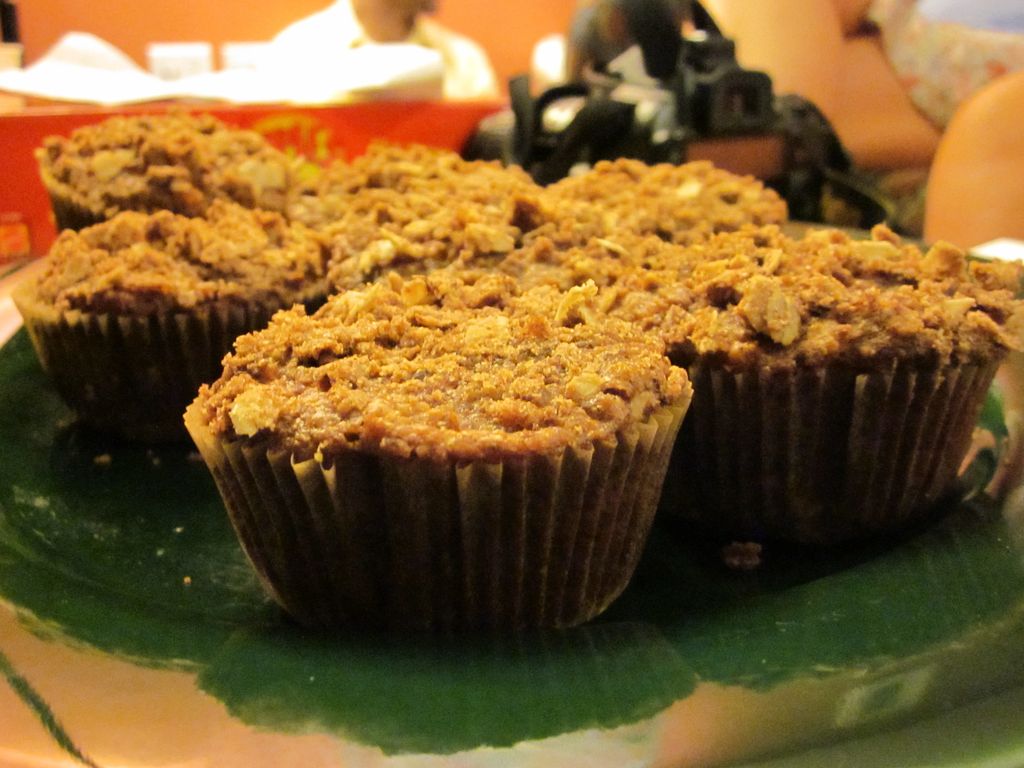
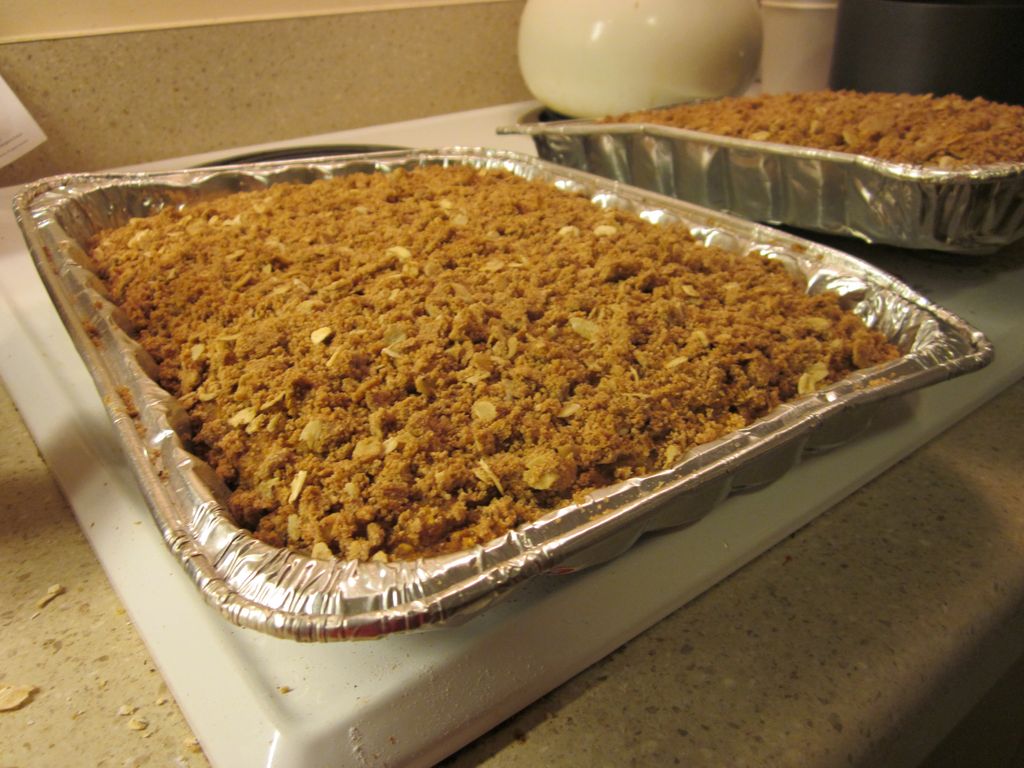
 Instead of using white flour, we baked using a combination of whole-wheat flour, old-fashioned oats, and flaxseeds. We also added grated carrots and apples to cut down on the amount of oil. I know a few people were a little uneasy about carrots sneaking into their dessert, but they were happily surprised by the moist texture the carrots and apples gave the cake. As a SC recipe, the cake also contains less sugar than the average coffee cake but still satisfies your sweet tooth.
Instead of using white flour, we baked using a combination of whole-wheat flour, old-fashioned oats, and flaxseeds. We also added grated carrots and apples to cut down on the amount of oil. I know a few people were a little uneasy about carrots sneaking into their dessert, but they were happily surprised by the moist texture the carrots and apples gave the cake. As a SC recipe, the cake also contains less sugar than the average coffee cake but still satisfies your sweet tooth.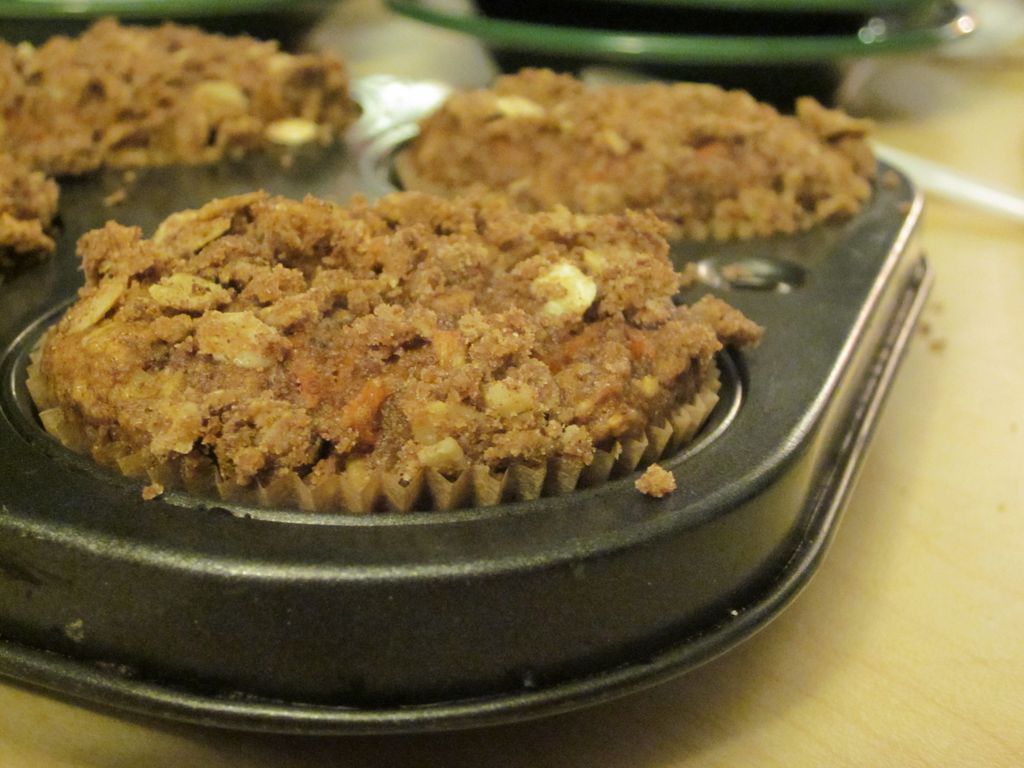



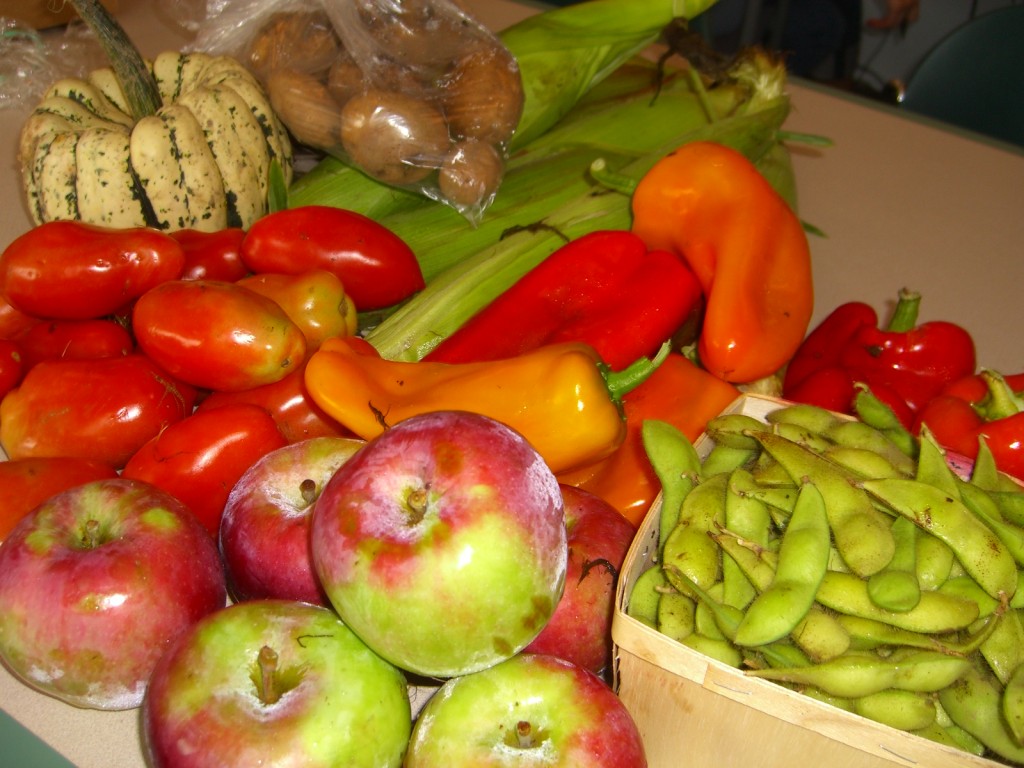
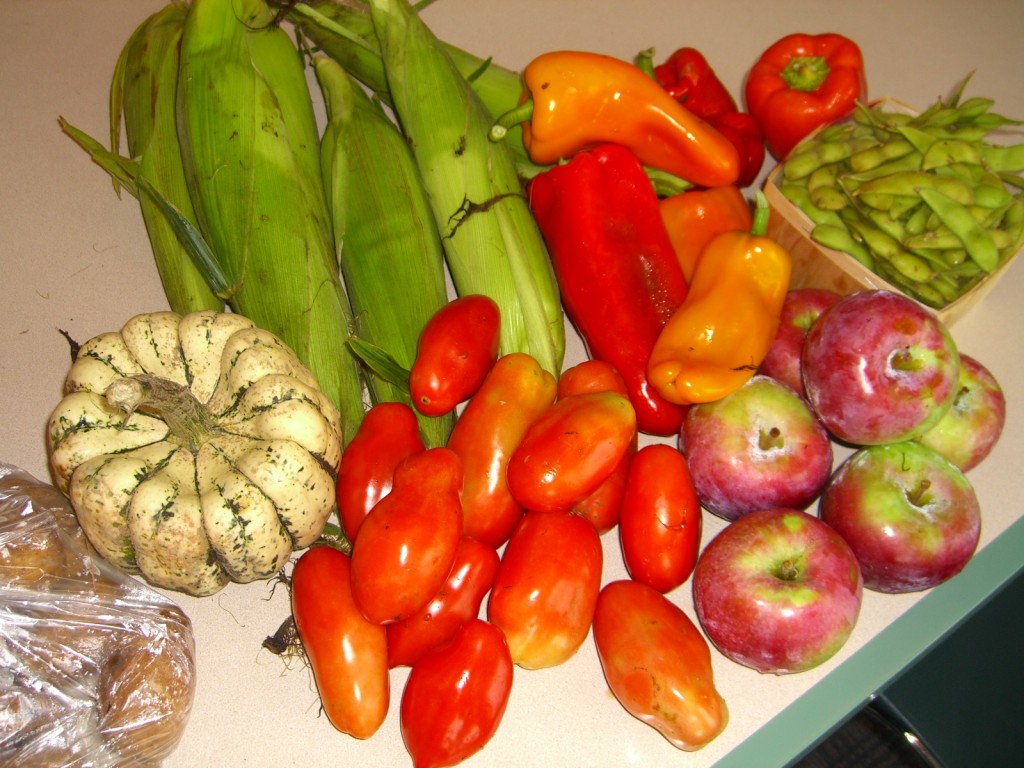 What’s in the box?
What’s in the box?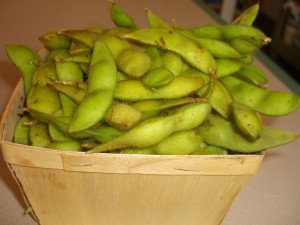 Edamame: If you’ve ever been to a Japanese restaurant, there is a good chance that you’ve at least seen edamame on the menu if not ordered some as an appetizer. Although the terms edamame and soybeans are sometimes used interchangeably, they are not the same. Edamame is a Japanese word to describe soybeans that have been prepared either by boiling in water with sea salt or by steaming with sea salt. Thanks to the growing popularity of edamame, you can now buy frozen bags at the grocery store and make edamame in your microwave. Edamame is traditionally eaten hot, but it tastes just as good cold, so you can make a large batch in your microwave and save a bunch in the refrigerator for when your stomach demands a snack.
Edamame: If you’ve ever been to a Japanese restaurant, there is a good chance that you’ve at least seen edamame on the menu if not ordered some as an appetizer. Although the terms edamame and soybeans are sometimes used interchangeably, they are not the same. Edamame is a Japanese word to describe soybeans that have been prepared either by boiling in water with sea salt or by steaming with sea salt. Thanks to the growing popularity of edamame, you can now buy frozen bags at the grocery store and make edamame in your microwave. Edamame is traditionally eaten hot, but it tastes just as good cold, so you can make a large batch in your microwave and save a bunch in the refrigerator for when your stomach demands a snack.
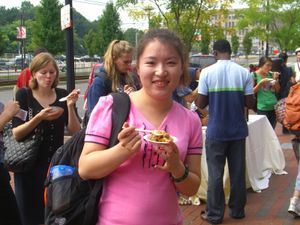
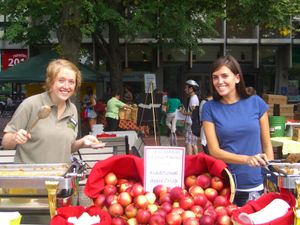
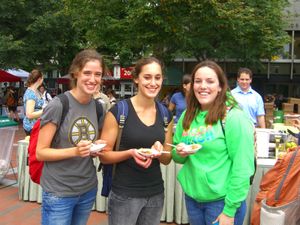

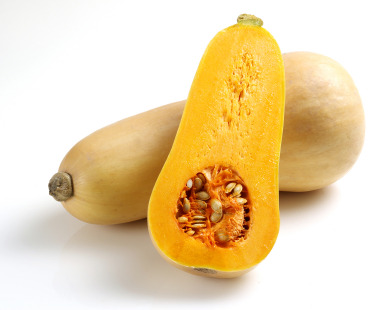 Choice Butternut Squash Soup is an essential fall recipe. Although the recipe is a great choice for when you have friends over to dinner, I recommend being greedy and making a full batch so that you can freeze individual servings. By having read-to-go servings waiting for you in the freezer, all you have to do in the morning is grab the container and heat it up at the GSU for lunch or pop it into a saucepan when you get home from class and have a nutritious dinner that takes less than 15min to prepare.
Choice Butternut Squash Soup is an essential fall recipe. Although the recipe is a great choice for when you have friends over to dinner, I recommend being greedy and making a full batch so that you can freeze individual servings. By having read-to-go servings waiting for you in the freezer, all you have to do in the morning is grab the container and heat it up at the GSU for lunch or pop it into a saucepan when you get home from class and have a nutritious dinner that takes less than 15min to prepare.